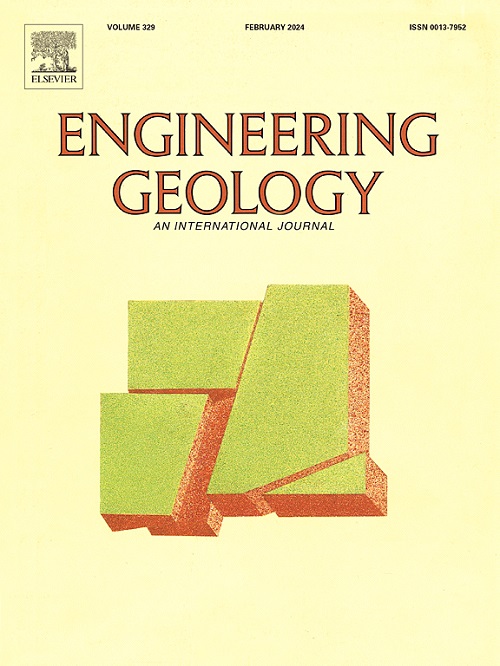Reconstruction of “Crystal Caves” geometry from 3D scan data for engineering and geological applications - from point cloud to numerical simulation
IF 8.4
1区 工程技术
Q1 ENGINEERING, GEOLOGICAL
引用次数: 0
Abstract
In geological engineering, 3D scanners are increasingly used to analyze complex structures. They are essential for developing detailed 3D models of irregular geological formations, as well as for creating terrain relief models, which are used in numerical simulations. Such analyses can be used to predict changes in caves and assess geological hazards such as deformation and stress in rocks. Common algorithms often struggle to capture complex structures, requiring manual adjustments that can reduce accuracy. The article focuses on reconstructing the geometry of the “Crystal Caves” in the Wieliczka Salt Mine for CFD/FEM analysis. The object is characterized by unusual complexity and irregularity of the surface, covered with transparent halite crystals. An original, author-developed procedure is presented, highlighting key aspects to consider during 3D scanning, point cloud development, and surface reconstruction. This will help to avoid costly and time-consuming errors in the reconstruction process. Crystal Caves geometry was reconstructed from a point cloud, confirming the effectiveness of the proposed procedure. Described approach ensures efficient meshing while preserving geometric features, making the model suitable for use in both CFD and FEM simulations. Despite the growing number of publications in 3D scanning and numerical simulation applications, there is a lack of studies presenting the complete procedure from a point cloud to a flow model. The novelty of this study lies in the development of a complete and reproducible workflow from raw point cloud data to geometry ready for CFD/FEM simulations, specifically tailored for environments with highly complex surface morphology.
从工程和地质应用的3D扫描数据重建“水晶洞穴”几何形状-从点云到数值模拟
在地质工程中,三维扫描仪越来越多地用于分析复杂的结构。它们对于开发不规则地质构造的详细3D模型以及创建用于数值模拟的地形起伏模型至关重要。这种分析可以用来预测洞穴的变化和评估地质灾害,如岩石的变形和应力。普通算法往往难以捕捉复杂的结构,需要人工调整,从而降低准确性。本文重点对维利奇卡盐矿“水晶洞”的几何形状进行重构,并进行CFD/FEM分析。该物体的特点是异常复杂和不规则的表面,覆盖着透明的岩盐晶体。提出了一个原始的,作者开发的程序,突出了在3D扫描,点云开发和表面重建过程中要考虑的关键方面。这将有助于避免在重建过程中出现代价高昂和耗时的错误。从点云重构了水晶洞穴的几何形状,证实了所提方法的有效性。所描述的方法在保持几何特征的同时保证了有效的网格划分,使模型适用于CFD和FEM模拟。尽管在3D扫描和数值模拟应用方面的出版物越来越多,但缺乏从点云到流模型的完整过程的研究。这项研究的新颖之处在于开发了一个完整的、可重复的工作流程,从原始点云数据到准备用于CFD/FEM模拟的几何形状,专门为具有高度复杂表面形态的环境量身定制。
本文章由计算机程序翻译,如有差异,请以英文原文为准。
求助全文
约1分钟内获得全文
求助全文
来源期刊

Engineering Geology
地学-地球科学综合
CiteScore
13.70
自引率
12.20%
发文量
327
审稿时长
5.6 months
期刊介绍:
Engineering Geology, an international interdisciplinary journal, serves as a bridge between earth sciences and engineering, focusing on geological and geotechnical engineering. It welcomes studies with relevance to engineering, environmental concerns, and safety, catering to engineering geologists with backgrounds in geology or civil/mining engineering. Topics include applied geomorphology, structural geology, geophysics, geochemistry, environmental geology, hydrogeology, land use planning, natural hazards, remote sensing, soil and rock mechanics, and applied geotechnical engineering. The journal provides a platform for research at the intersection of geology and engineering disciplines.
 求助内容:
求助内容: 应助结果提醒方式:
应助结果提醒方式:


